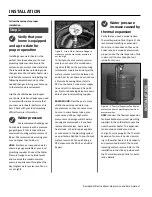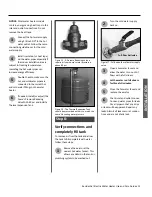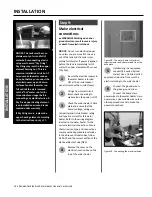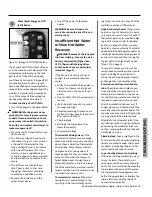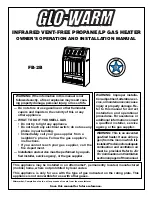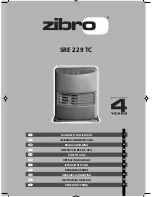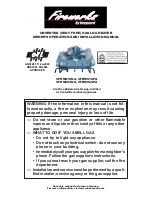
8 • Residen al Electric Water Heater Use and Care Guide
BACKGROUND:
Water expands when
heated, and the increased volume
of water must have a place to go, or
thermal expansion will cause large
increases in water pressure (despite
the use of a Pressure Reducing Valve
on the home’s main water supply
line). The Safe Drinking Water Act of
1974 requires the use of back
fl
ow
preventers and check valves to restrict
water from your home reentering
the public water system. Back
fl
ow
preventers are o en installed in water
meters and may not be readily visible.
As a result, most all plumbing systems
today are now “closed,” and almost all
homes now need a Thermal Expan-
sion Tank.
A Thermal Expansion Tank is a prac -
cal and inexpensive way to help avoid
damage to the water heater, washing
machine, dishwasher, ice maker and
even toilet valves. If your toilet oc-
casionally runs for no apparent reason
(usually brie
fl
y at night), that may be
due to thermal expansion increasing
the water pressure temporarily.
Water pipe and tank
leaks
Leaks from plumbing pipes or from
the water heater itself can damage
property and could cause a
fi
re risk.
• Install an automatic leak detec-
tion and shutoff device (available
at your local plumbing supplier).
These devices can detect water
leaks and can shut off the water
heater’s water supply if a leak
occurs.
Figure 6 -
A suitable drain pan piped to an
adequate drain can help protect flooring
from leaks and drips.
• Install a suitable drain pan (avail-
able at your local plumbing suppli-
er) under the water heater (Figure
6) to catch condensation or leaks
in the piping connections or tank.
Most codes require, and we recom-
mend, installing the water heater
in a drain pan that is piped to an
adequate drain. The drain pan must
be at least two inches wider than
the diameter of the water heater.
Install the drain pan so the water
level would be limited to a maxi-
mum depth of 1-3/4”.
✓
Water tempera-
ture regula on
Figure 7 -
Thermostatic Mixing Valves
installed at each point -of-use can help
prevent scalds.
Install Thermosta c Mixing Valves
(Figure 7) to regulate the temperature
of the water supplied to each point-
of-use (for example, kitchen sink,
bathroom sink, bath, shower). Con-
sult the valve manufacturer’s instruc-
ons or a quali
fi
ed person.
WARNING! Even if the water heater
thermostat is set to a rela vely low
temperature, hot water can scald.
Install Thermosta c Mixing Valves at
each point-of-use to reduce the risk of
scalding (
page 4
).
BACKGROUND:
A Thermosta c Mix-
ing Valve, installed at each point-
of-use, mixes hot water from the
water heater with cold water to more
precisely regulate the temperature of
hot water supplied to
fi
xtures. If you
aren’t sure if your plumbing system
is equipped with properly installed
and adjusted Thermosta c Mixing
Valves at each point where hot water
is used, contact a quali
fi
ed person for
more informa on.
INS
TALLA
TION
INSTALLATION







